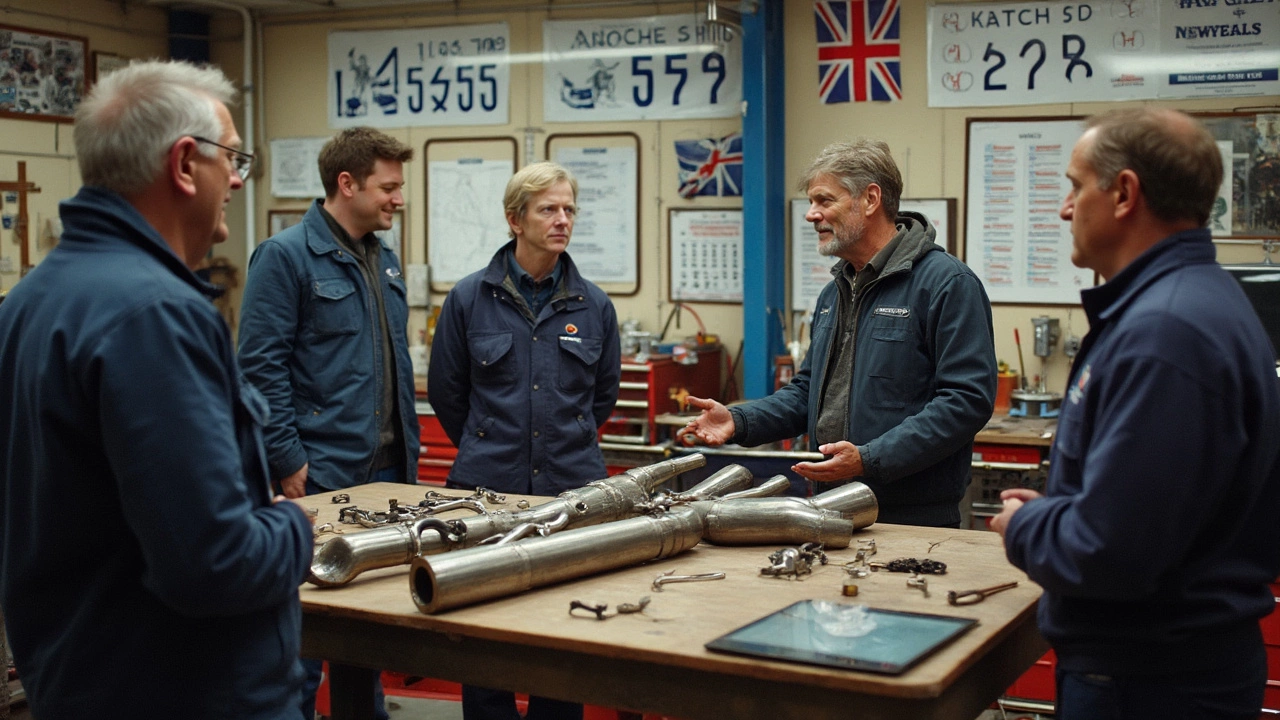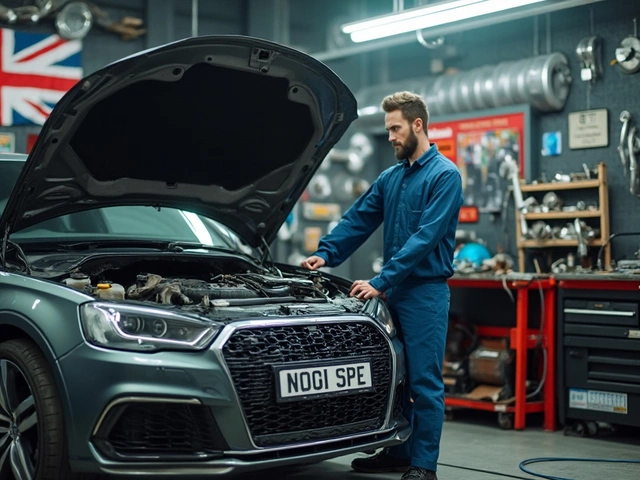Everyone’s heard the rumors—put on a cat back exhaust and your engine’s doomed. Truth is, most stories floating around car forums are more scare than science. Cat back exhausts are popular for good reason. They swap out your car’s exhaust system from the catalytic converter back, which means better sound, a possible boost in performance, and even a slight kick in fuel economy for some drivers.
But nobody wants to risk their engine over something as simple as a new pipe, right? If you’re worried about damage, you’re not alone. Car guys (and gals, shout-out to Hannah who loves a good road trip) debate this all the time. The real risk comes down to how you do the upgrade, the quality of the parts, and whether you follow some basic rules.
Let’s get into what actually happens when you put a cat back on your car, and what you should watch out for if you want the sound but don’t want an engine bill the size of your rent.
- What Is a Cat Back Exhaust System?
- How It Affects Your Engine
- Potential Risks and Misconceptions
- Tips for Safe Installation and Use
- Signs Something’s Wrong and What to Do
What Is a Cat Back Exhaust System?
When people talk about a cat back exhaust system, they’re not getting fancy with cats—they’re talking about the part of your car’s exhaust that starts at the catalytic converter (the “cat”) and goes back toward the tailpipe. Everything from the cat to the rear bumper—so, the mid-pipe, muffler, and tailpipe—those all get swapped out in a cat back kit. Your catalytic converter stays put, so you’re still meeting emissions laws.
The main reason folks get a cat back exhaust is for a deeper, sportier sound and better airflow. Manufacturers design stock systems to be quiet and cheap, not necessarily to let your engine breathe. By opening up the pipes a bit and using less restrictive mufflers, you can help your engine push exhaust out faster, especially if you have a turbo or kinda sporty ride.
Here’s a look at what a typical cat back system replaces:
- Mid-pipe (sometimes called the resonator pipe)
- Muffler
- Tailpipe and exhaust tip
Most systems are made from stainless steel or aluminized steel to resist rust—nobody wants their upgrade rusting out on them in a couple of winters.
Different kits fit different goals and budgets. Some just want a little more rumble on their daily commute, while others aim for track-day ready setups. No matter the reason, it all connects back to one thing: making exhaust flow easier without messing with your emissions equipment.
| Part | Stock Exhaust | Cat Back Upgrade |
|---|---|---|
| Muffler | Restrictive, quiet | Less restrictive, louder |
| Pipe Material | Often mild steel | Usually stainless or aluminized steel |
| Tailpipe Tip | Basic steel | Polished, bigger, fancier |
If you want a bolt-on upgrade that gives your ride a voice and a shot at better power, a cat back exhaust system is usually the go-to move. Just make sure you pick a kit that actually fits your car’s make and model—universal kits can turn into a real headache if you’re not ready for custom tweaks.
How It Affects Your Engine
The big question is whether a cat back exhaust can hurt your engine, or if it even makes a noticeable impact. Here’s the plain truth: a cat back exhaust doesn’t mess with the parts of your car that keep the engine running. It only handles the flow of gases after they’ve left the catalytic converter, so nothing is changing the engine’s core components or performance settings by default.
Upgrading to a cat back system changes the way your exhaust exits, which can make your car breathe a little better. With less restrictive pipes and smoother airflow, your engine might see a small bump in horsepower—usually 2-5% for most regular cars. On sports cars, maybe a little more, but we're not talking miracle numbers. Here’s a table showing typical horsepower boosts based on car type:
| Car Type | Expected HP Increase |
|---|---|
| Compact Sedan | +3 to +6 HP |
| V6/V8 Sports Car | +6 to +15 HP |
| Turbocharged Vehicle | +10 to +20 HP |
Now, there’s a myth that if you let the exhaust flow too freely, you’ll lose backpressure and hurt low-end torque (the "oomph" you feel when you start moving). That only really matters if you go extreme—like, cutting out everything after the manifold or fitting race parts on a stock family car. For most folks just swapping out stock for a cat back, factory computers and sensors can handle the upgrade just fine, and you won’t hurt your engine.
If your check engine light pops up after the install, odds are something simple got knocked loose—like an O2 sensor plug or a leak at a clamp. That’s easy to fix. The risk of real engine damage only comes from shoddy installation, super cheap parts (think backyard eBay steals), or skipping the catalytic converter entirely, which can throw your car’s computer into confusion.
Bottom line, as long as you’re using a quality system that’s made for your exact car model, and you bolt it on right, your engine’s not in danger. You're just getting a better sound, probably a cleaner look, and possibly a smidge more power. If you want the gains but zero stress, just make sure what you're putting on is legit and you're not skipping any key steps. That’s it.

Potential Risks and Misconceptions
The top question on everyone’s mind: can a cat back exhaust system really mess up your engine? Short answer—highly unlikely, if you’re doing things right. The design of a cat back system doesn’t touch anything before the catalytic converter, which means your engine’s main protection systems stay in one piece.
One common myth is that more flow equals less back pressure and somehow this hurts your engine. Modern engines actually are smart enough to work just fine with a range of back pressures. Unless you bolt on a wild system that messes up your air/fuel ratio, you’re not putting your engine at risk. Most legitimate brands design cat backs to work with the original engine settings, not against them.
Still, there are some risks—but they’re more about bad installs or cheap parts than the concept itself. If pipes aren’t fitted right, you could get exhaust leaks. These can set off your check-engine light or even let toxic fumes into your car’s cabin. Cheap materials also rust out, sometimes taking parts of your underbody with them.
Some folks believe swapping your exhaust will nuke your warranty or make your car fail emissions tests. Here’s what’s true: A cat back system doesn’t touch emissions controls or sensors, so in most states, you’re still legal. As for the warranty, the Magnuson-Moss Warranty Act says a dealer can’t just void your coverage because you upgraded an exhaust. They’d have to prove your new parts caused the problem.
- Always check fitment for your specific vehicle model.
- Use quality gaskets and hardware to avoid leaks.
- Pay attention to local noise regulations—some systems get loud, fast.
For a clearer look, here’s how problems actually break down out in the real world:
| Risk | Actual Likelihood (with proper install) | Main Cause |
|---|---|---|
| Engine Damage | Extremely rare | Incorrect tuning on turbo/modified cars |
| Check Engine Light | Uncommon | Leak at joints or sensors left unplugged |
| Rust/Corrosion | Depends on material used | Cheap stainless or no coating |
| Drivability issues | Rare | Poor fit or installing wrong system for car |
If you stick to trusted brands and make sure the job’s done right (or have a good shop do it), you aren’t gambling with your engine. Make decisions based on facts, not scary stories from that one guy at the parts counter.
Tips for Safe Installation and Use
Getting a cat back exhaust on your ride shouldn’t be risky, as long as you don’t cut corners. Most problems come from poor installation, cheap parts, or ignoring your car’s unique needs. So, here’s how to get it right the first time.
A few solid rules can make the difference between a sweet upgrade and a headache later:
- Buy the right kit for your make and model. Universal kits sound great on paper, but if it’s not designed for your car, you’ll likely run into fit or clearance problems. Check that the system matches your car’s year, engine size, and trim.
- Quality over cost-cutting. Cheaper exhausts might rust, leak, or not fit well. Stainless steel holds up best. Look for brands with solid reviews and warranties, even if it costs a little more upfront.
- Follow torque specs. Over-tightening can warp flanges or snap bolts. Manufacturers provide recommended torque specs for a reason. Use a torque wrench, not just elbow grease.
- Double-check for exhaust leaks. After you bolt it all together, start your car and listen closely around joints and hangers. A little soapy water sprayed on connections will bubble up if you’ve got a leak.
- Clear heat shield and sensor clearances. Don’t let pipes touch heat shields, wires, or hoses. Also, make sure any oxygen sensors are located and tightened correctly, or you’ll have engine codes lighting up your dash.
If you’re not confident in your tools or know-how, consider a professional install. According to a 2024 survey by CarParts.com, about 52% of people who installed exhausts in their garage faced minor issues, while pro installs had fewer than 18% reported problems.
| Installation Method | Reported Issue Rate |
|---|---|
| DIY (Home Garage) | 52% |
| Professional Shop | 18% |
Once everything’s in and buttoned up, keep an eye (and ear) out in the coming weeks. Strange rattles, new exhaust smells, or a sudden check engine light are early signs something’s off. Don’t ignore them—catching an install issue early can save big cash and drama down the road.

Signs Something’s Wrong and What to Do
If you’ve just installed a cat back exhaust and something feels off, don’t ignore your gut. Your car will usually tell you something’s wrong if you know what to look for. Here are the signs to pay attention to:
- Check Engine Light: If your dash lights up, especially the check engine light, something in the exhaust setup may be sending weird signals to your car’s computer.
- Strange Noises: Rattling, banging, or weird hissing? Could be loose parts, bad welds, or leaks in the new exhaust.
- Loss of Power: If your car suddenly feels slow or bogged down, the new exhaust might be restricting flow or causing sensors to misread.
- Backfiring or Odd Smells: Popping sounds or strong fumes mean gases aren’t flowing right. This can damage your engine or harm your health.
- Bad Fuel Economy: Saw a big drop in MPG after the upgrade? You may have an exhaust leak or a sensor issue messing with your fuel mix.
As the team at Car and Driver points out:
“Exhaust system changes can upset the balance of air and fuel—if not done right, this can cause rough running and increase the risk of engine trouble.”
If you spot any of those signs, here’s what you should do:
- Check all clamps and bolts—make sure everything’s tight and lined up right.
- Look for dark spots or soot around joints. That means a leak. Leaks after installation are common if parts don’t fit just right.
- Scan for engine codes with a cheap OBD-II reader. Codes like P0420 or P0171 usually relate to exhaust or sensor issues.
- If weird sounds or low power last longer than a day or two, go see a pro. Don’t wait until it gets worse.
Quick tip: Keep a cat back exhaust installation checklist handy—most folks miss at least one thing during home installs.
Here’s a snapshot of common post-install issues and what they might mean:
| Warning Sign | Possible Problem | Fix |
|---|---|---|
| Check Engine Light | Sensor issue, leak | Scan and address code, check exhaust joints |
| Rattling Noise | Loose clamp or mount | Tighten bolts and supports |
| Poor Power | Flow restriction or leak | Recheck fit, inspect for blockages |
| Bad MPG | O2 sensor reading off | Check sensor placement and seal |
Staying alert for these issues and acting early can save your engine—and your wallet—from bigger problems down the road.


